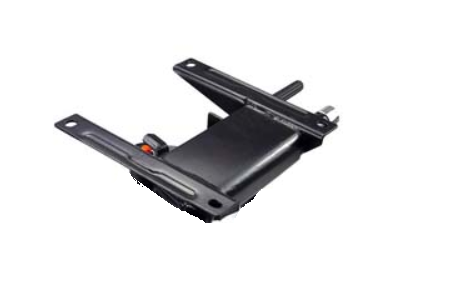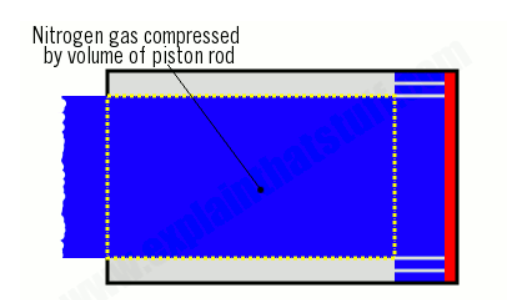Background:
Laundry baskets are a common household item used daily by people around the world. Doing laundry is a daily chore and almost everyone has done it at least once in their lives.
Ng and Fadhilah (2018) stated that the number of elderly living alone in Singapore aged 65 and above is about “47,000” in 2016 and the numbers are estimated to increase to “83,000” by 2030. A group of users who may develop lower back problems due to the current designs of the laundry baskets is the elderly. In the case of the United States of America, about 80 percent of adults will encounter lower back strain in their lives and one of the risk factors is advancing age (National Institute of Neurological Disorders and Stroke, 2019). To avoid lower back strain, a proper technique of lifting must be followed. According to Goins (2010), the proper technique for lifting heavy loads is for the users to bend their knees while keeping a straight back, lift the load by engaging their core instead of their lower back. However, most elderly have weak joints and do not have enough core strength to do a proper lift, leading to a much higher risk of lower back strain.
With the increasing number of elderly living alone, they struggle to do basic tasks at home such as laundry. Lifting and carrying loads of laundry is a daunting task for the elderly as they are prone to injuries such as lower back strain. Rabideau (2019) discusses the seven best laundry baskets that are currently in the market. The most common and popular baskets are made out of plastic due to it being “durable, lightweight and often cheaper than woven alternatives”. The typical laundry basket designs are very similar, being handheld and having a height of around 35 cm. This requires the user to bend down to pick up clothes inside the basket. Moving the laundry basket can also prove to be a challenge as a laundry basket filled with dry clothes can weigh up to 8kg, and wet clothes may weigh up to twice as much (RepairAid, 2017).
The current laundry basket designs are not optimal for the elderly and must be changed to reduce the risk of lower back strain. In light of this situation, an ideal home laundry basket will have a lifting mechanism for adjustment of height and also wheels for maneuverability.
Problem Statement:
The current problem for a typical laundry basket is its height and lack of maneuverability. When doing laundry, users will have to bend down to pick up clothes and lift the full weight of the basket if they want to move it to a higher position. The new laundry basket design includes a pneumatic lifting system that allows users to adjust its height and a base plate with 5 wheels attached at the bottom for easy maneuverability.
Purpose statement:
This report proposes that IKEA incorporates our improved laundry basket design that has a pneumatic lifting system and roller wheels attached at the base which allows adjustment of height and ease of movement into their current catalogue.
Proposed design:
The typical laundry basket designs have a height of around 35 cm and lack wheels.
Implementing a pneumatic lifting mechanism on a base plate and attaching wheels at the bottom of the plate will produce an ideal basket for the elderly with its two new features of adjustable height and easy maneuverability.
Base Plate and Legs:

The basket will be fixed onto the top of the base plate and a gas cylinder will be attached to the middle of the bottom of the base plate.

The bottom of the gas cylinder will be inserted into the hole in the middle of the legs and the wheels will be attached on each end of the legs. The shape of the legs is for balance of the whole basket as the 5 legs equally take up the load of the laundry.
Pneumatic Lifting Mechanism:

The first proposed improvement to the basket is a pneumatic lifting mechanism, which allows the height to be adjustable. With the pneumatic lifting mechanism installed, the elderly will only need to tap a lever to increase the height of the basket which allows them to comfortably remove clothes.

The pneumatic lifting mechanism consists of a base for the basket to be placed upon and a gas cylinder that is able to extend or retract due to pneumatic principles and also a lever that controls the locking of the piston. The main components that contribute to the function of a gas cylinder are the piston, cylinder and gas seals.


Pneumatic cylinders or sometimes referred to as a gas spring is a cylinder filled with air and enclosed with a piston within. A lever will then control the locking of the piston. When the lever is activated, pushing the piston will cause the air within to be compressed, raising the internal pressure within the enclosed cylinder. When the lever is activated again and there is no force acting on the piston, the internal pressure within the cylinder will push the piston outwards of the cylinder. This movement of the piston allows the basket to adjust its height according to the users actions.
Wheels:

The second proposed improvement to the laundry basket is to install 5 wheels that would be screwed into the legs via screws. The wheel is attached to a swivel caster which ensures rotation of 360 degrees while under load. Each wheel has an allowable load of 40kgf, and combined they have a total allowable load of 200kgf. A braking mechanism can also be found on the wheel which restricts all movement and stops the product from moving freely. This will keep the load evenly distributed between the wheels preventing the load from tipping over. With the wheels mounted, the elderly would be able to move the laundry basket from point to point with ease.
Wheel Diameter: 40mm
Mass: 60g
Type: Screw in type
Wheel width: 41.5mm
Allowable load: 40kgf
Benefits:
The additional features added onto the laundry basket will greatly decrease the risk of elderly injuring themselves when doing laundry. The pneumatic lifting mechanism allows the user to adjust the basket's height and roller wheels will provide ease of movement when doing laundry.
Evaluation:
The features in the new laundry basket design have many benefits due to its adjustable height and easy maneuverability. However, there are two limitations due to the design.
The first limitation is the cost, the components of the new laundry basket design greatly increase the price of the basket. The new laundry basket will require a basket, base plate, pneumatic cylinder, legs, and wheels. Most of these components can actually be obtained from computer chairs. The price of a typical computer chair is around $34 (Lazada, 2020). Estimating the components from the chair needed, the price of the required components will be around three-quarters of the full computer chair price which is $25.50. Adding on a good quality basket from IKEA which is around $10 (Ikea, 2020), the total estimated price of the new laundry basket will be $35.50. A typical laundry basket from Ikea is around $10 to $30 and comparing this price to the new laundry basket, the difference is $5.50 to $25.50.
The second limitation is that most elderly in Singapore have a stubborn mindset when it comes to their belongings. Usually, they will not be willing to try new designed products and also will not throw away their old products easily. Convincing the elderly to purchase the new laundry basket will be challenging as they have a usable one at home. The elderly that are living alone will not have anyone to discuss whether the new laundry basket will be useful and worth buying.
With the increasing rate of elderly living alone in Singapore, it is very important to ensure that they do not injure themselves while doing simple tasks at home as there is no one there to aid them.
Methodology:
Both Primary and Secondary research sources were used to reference information related to our report for its completion.
Primary Research
The team measured the weight of the typical laundry basket at maximum capacity. Primary research was done on the price of the laundry basket, and the price of the computer chair which gave us an estimate of how much the new laundry basket design will cost.
Secondary Research
To come out with possible modifications to improve the existing product, the team did research on the targeted audience, weaknesses of the product. Secondary resources were used to provide evidence for our statements, such as information regarding existing laundry baskets, problems with the existing designs and features in other products that can help solve these issues. References to these sites also provided us with ideas to add to the design proposal.
Concluding Statement:
In conclusion, the new laundry basket will reduce the risk of lower back strain of the elderly by incorporating a pneumatic lifting mechanism and wheels. The pneumatic lifting mechanism will consist of a gas cylinder which allows the height of the laundry basket to be adjusted freely by the user. The wheels attached to the leg of the laundry baskets will allow the users to push the basket with little effort, bringing about easy and free maneuverability. These two features will ensure that the elderly using the basket do not have to bend down to pick up clothes or lift the laundry basket to move it, thereby reducing the likelihood of lower back strain. This new laundry basket design will ensure that the elderly are able to do laundry at home safely and without much effort.
References:
Chang, L. (2010). How to Wreck Your Back. Retrieved and adapted from
https://www.webmd.com/back-pain/features/how-to-wreck-your-back#2
National Institute of Neurological Disorders and Stroke (2014) - Lower Back Pain Fact Sheet. Retrieved and adapted from https://www.ninds.nih.gov/disorders/patient-caregiver-education/fact-sheets/low-back-pain-fact-sheet
Ng, D. (2018). The loneliness of old age - and an experiment to see if Instagram can be a cure. Retrieved and adapted from https://www.channelnewsasia.com/news/cnainsider/the-loneliness-of-old-age-and-an-experiment-to-see-if-instagram-10675658
Repair Ad (2017). Washing Machine Capacity Explained. Retrieved and adapted from
https://www.repairaid.co.uk/help/washing-machines/washing-machine-capacity-explained/
Rabideau, C. (2019). The 7 Best Laundry Baskets of 2020. Retrieved and adapted from
https://www.thespruce.com/best-laundry-baskets-4154604
Gas cylinder Concept
https://www.explainthatstuff.com/gassprings.html
Wheel specifications
https://www.monotaro.sg/p/49024071?gclid=Cj0KCQiAwP3yBRCkARIsAABGiPqrFRbYGnHcc4bALeiKQYKHXQmZHMsmrH_qu3EqGKBJTs8HYQkdgQsaAp7pEALw_wcB&utm_medium=cpc&utm_source=googleps&ef_id=Cj0KCQiAwP3yBRCkARIsAABGiPqrFRbYGnHcc4bALeiKQYKHXQmZHMsmrH_qu3EqGKBJTs8HYQkdgQsaAp7pEALw_wcB:G:s#
Concept of caster wheels
https://www.douglasequipment.com/casters-1/difference-casters-wheels/
Pneumatic cylinder price
https://www.chairpartsonline.com/gas-lift-cylinders/
Lazada computer chair
https://www.lazada.sg/products/office-chair-i350708811-s814280034.html?spm=a2o42.searchlist.list.113.782c7e7fs1pQYW&search=1
Ikea quality laundry basket
https://www.ikea.com/sg/en/p/torkis-flexi-laundry-basket-in-outdoor-blue-30339226/